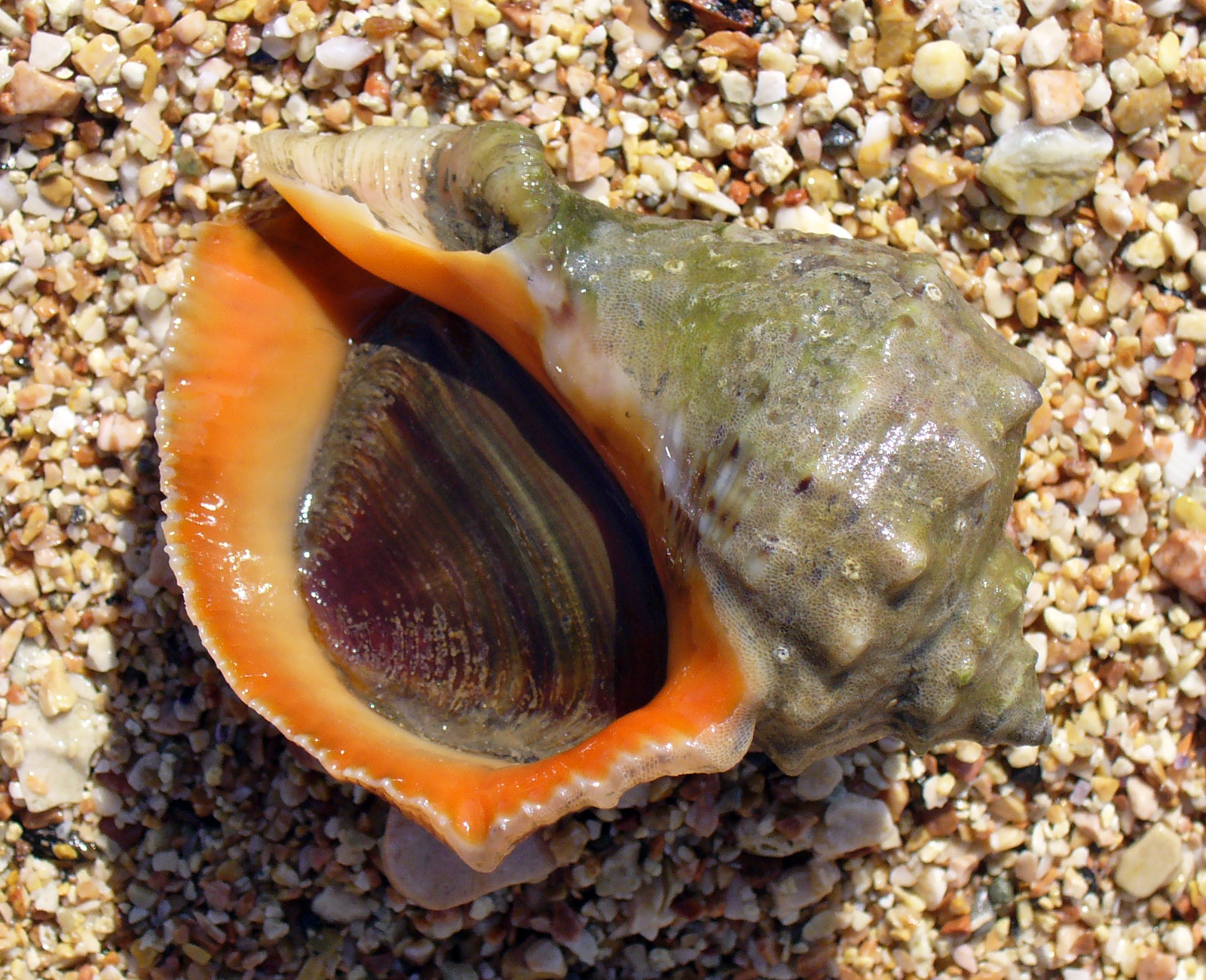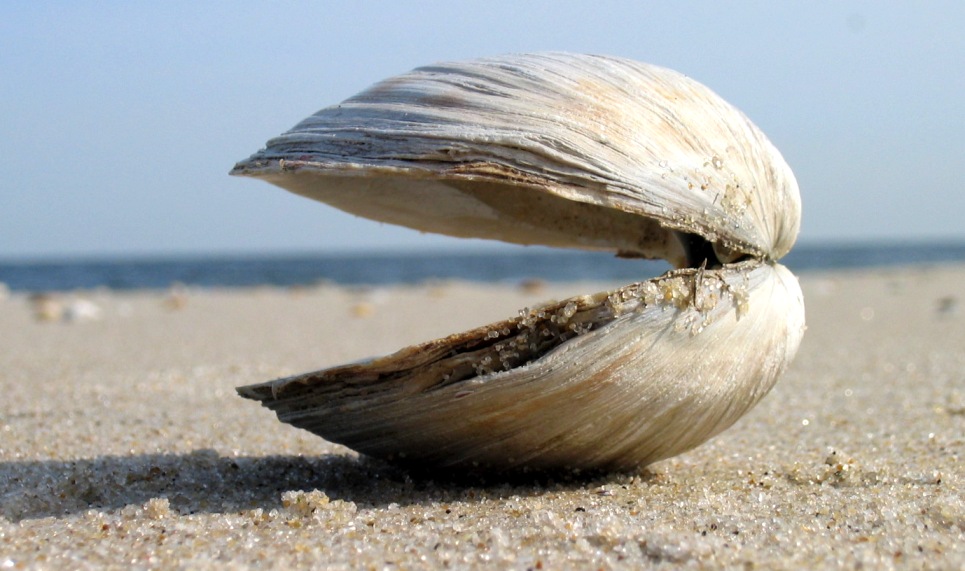|
Bishop Cap Formation
The Bishop Cap Formation is a geologic formation in the Franklin Mountains of southern New Mexico and western Texas and the Hueco Mountains of western Texas. It preserves fossils dating back to the Moscovian to Kasimovian Ages of the early Pennsylvanian. Description The formation consists of brown to gray shale alternating with thin ray ledges of limestone. Shale makes up 65 to 75 percent of the formation. The total thickness is up to . The formation rests on the Berino Formation and is overlain by the Panther Seep Formation. Fossils The formation is highly fossiliferous, with a fauna dominated by snails, brachiopods (''Neospirifer'', '' Crurithyris'', ''Mesolobus''), and clams, but is less diverse than the underlying Berino Formation. The lower beds contain the fusulinids '' Wedekindellina euthysepta'' and '' Fusulina distenta''. Opercula of cephalopods (possibly ''Liroceras'') have been found in the formation, as have shells of ''Bellerophon'', ''Phestia'', and ''Euphemite ... [...More Info...] [...Related Items...] OR: [Wikipedia] [Google] [Baidu] |
Formation (stratigraphy)
A geological formation, or simply formation, is a body of rock having a consistent set of physical characteristics (lithology) that distinguishes it from adjacent bodies of rock, and which occupies a particular position in the layers of rock exposed in a geographical region (the stratigraphic column). It is the fundamental unit of lithostratigraphy, the study of strata or rock layers. A formation must be large enough that it can be mapped at the surface or traced in the subsurface. Formations are otherwise not defined by the thickness of their rock strata, which can vary widely. They are usually, but not universally, tabular in form. They may consist of a single lithology (rock type), or of alternating beds of two or more lithologies, or even a heterogeneous mixture of lithologies, so long as this distinguishes them from adjacent bodies of rock. The concept of a geologic formation goes back to the beginnings of modern scientific geology. The term was used by Abraham Gottlob W ... [...More Info...] [...Related Items...] OR: [Wikipedia] [Google] [Baidu] |
Limestone
Limestone ( calcium carbonate ) is a type of carbonate sedimentary rock which is the main source of the material lime. It is composed mostly of the minerals calcite and aragonite, which are different crystal forms of . Limestone forms when these minerals precipitate out of water containing dissolved calcium. This can take place through both biological and nonbiological processes, though biological processes, such as the accumulation of corals and shells in the sea, have likely been more important for the last 540 million years. Limestone often contains fossils which provide scientists with information on ancient environments and on the evolution of life. About 20% to 25% of sedimentary rock is carbonate rock, and most of this is limestone. The remaining carbonate rock is mostly dolomite, a closely related rock, which contains a high percentage of the mineral dolomite, . ''Magnesian limestone'' is an obsolete and poorly-defined term used variously for dolomite, for lime ... [...More Info...] [...Related Items...] OR: [Wikipedia] [Google] [Baidu] |
Bellerophon (genus)
''Bellerophon'' is a genus of extinct paleozoic marine molluscs of uncertain position ( Gastropoda or Monoplacophora) in the family Bellerophontidae. The genus was named after Bellerophon, the ancient Greek hero. ''Bellerophon'' is the type genus of the family Bellerophontidae. Shell description The genus is characterised by a shell which is globose, convolute, and planispiral (symmetrically coiled). The shell of ''Bellerophon'' superficially resembles that of a miniature cephalopod (e.g. ''Nautilus'' or an ammonite), except that septa are lacking. The shell of ''Bellerophon'' is often a couple of centimeters in maximum dimension. The external surface is smooth, ornamented only by growth lines. There is a low crest or ridge running along the midline of the shell. Many specimens of ''Bellerophon'' show something resembling a "waterline" about halfway up the shell, suggesting that a large amount of the mantle and foot were exposed and covered the outside of the shell, as in ... [...More Info...] [...Related Items...] OR: [Wikipedia] [Google] [Baidu] |
Liroceras
''Liroceras'' is a genus of nautiloid cephalopod. It is the type genus of the clydonautiliacean family, Liroceratidae Liroceratidae is an extinct family of nautilids, shelled marine molluscs, belonging to the Clydonautiloidea, consisting of generally smooth, involute, nautiliconic forms with a small umbilicus. The whorl section is usually depressed and broad ..., and is characterized by a rapidly expanding, subglobular, nautiliconic shell with a reniform whorl section, small umbilicus, essentially straight sutures, and a siphuncle with a variable but not marginal position.Bernhard Kummel, 1964. Nautiloidea-Nautilida; '' Treatise on Invertebrate Paleontology'', Part K. Geol Soc of America and Univ of Kansas Press, R. C. Moore (ed) — Liroceratidae K444–K447. ''Liroceras'' has a temporal range from the Mississippian to the Permian period, the longest of the Liroceratidae. It has been found in North America, Europe, China and the East Indies. A similar genus, '' Condr ... [...More Info...] [...Related Items...] OR: [Wikipedia] [Google] [Baidu] |
Cephalopod
A cephalopod is any member of the molluscan class Cephalopoda ( Greek plural , ; "head-feet") such as a squid, octopus, cuttlefish, or nautilus. These exclusively marine animals are characterized by bilateral body symmetry, a prominent head, and a set of arms or tentacles ( muscular hydrostats) modified from the primitive molluscan foot. Fishers sometimes call cephalopods "inkfish", referring to their common ability to squirt ink. The study of cephalopods is a branch of malacology known as teuthology. Cephalopods became dominant during the Ordovician period, represented by primitive nautiloids. The class now contains two, only distantly related, extant subclasses: Coleoidea, which includes octopuses, squid, and cuttlefish; and Nautiloidea, represented by '' Nautilus'' and '' Allonautilus''. In the Coleoidea, the molluscan shell has been internalized or is absent, whereas in the Nautiloidea, the external shell remains. About 800 living species of cephalopods have been i ... [...More Info...] [...Related Items...] OR: [Wikipedia] [Google] [Baidu] |
Operculum (animal)
An operculum is an anatomical feature, a stiff structure resembling a lid or a small door that opens and closes, and thus controls contact between the outside world and an internal part of an animal. Examples include: * An operculum (gastropod), a single lid that (in its most complete form) closes the aperture of the shell when the animal is retracted, and thus protects the internal soft parts of the animal that are not completely covered by the shell. The operculum lies on the top rear part of the foot. When the foot is retracted, the operculum is rotated 180° and closes the shell. * An operculum (fish), a flap that covers the gills in bony fishes and chimaeras. * The cover that rapidly opens a cnida of a cnidarian such as a jellyfish or a sea anemone. The lid may be a single hinged flap or three hinged flaps arranged like slices of pie. * In insects, the operculum is the name for one or more lids covering the tympanal cavity. A subgenital operculum is exhibited in phasmoidea ... [...More Info...] [...Related Items...] OR: [Wikipedia] [Google] [Baidu] |
Fusulina
The Fusulinidae is a family of fusulinacean foraminifera from the upper Carboniferous (Lower Pennsylvanian, Morrowan) to the Upper Permian ( Guadalupian), tests of which are fusiform to subcylindrical with walls of two to four layers. Are planispirally coiled throughout or with early whorls at a distinct angle to the later plane of coiling. Septa, flat to well fluted; tunnel, single; chomata variable in development. Taxonomy The Fusulinidae is divided into the following subfamilies, ordered as in Loeblich and Tappan, 1988. Fusulinellinae, Staff and Wedekind 1910. Fusulinidae with flat or slightly fluted septa, wall of three or four layers including diaphanotheca and generally pronounced outer tectorium. U Carb - U Permian (as for the family) Fusulininae, Von Möller 1878 Fusulinidae in which the septa are moderately to strongly fluted, wall is composed of 2 to 4 layers including diaphanotheca, the outer tectoria is weakly developed or absent, and chomata or pseudochomata ... [...More Info...] [...Related Items...] OR: [Wikipedia] [Google] [Baidu] |
Wedekindellina
''Wedekindellina'' is an extinct genus of fusulinid The Fusulinida is an extinct order within the Foraminifera in which the tests are traditionally considered to have been composed of microgranular calcite. Like all forams, they were single-celled organisms. In advanced forms the test wall was dif .... Species *''W. alveolata'' Stewart, 1992 *''W. fluxa'' Wilde, 2006 *''W. henbesti'' Skinner, 1931 *''W. plena'' Wilde, 2006 *''W. pseudohenbesti'' Wilde, 2006 *''W. rossi'' Wilde, 2006 *''W. similis'' Wilde, 2006 *''W. uralica'' Dutkevich, 1934 References Paleozoic life Fusulinida Radiolarian genera {{Foram-stub ... [...More Info...] [...Related Items...] OR: [Wikipedia] [Google] [Baidu] |
Fusulinid
The Fusulinida is an extinct order within the Foraminifera in which the tests are traditionally considered to have been composed of microgranular calcite. Like all forams, they were single-celled organisms. In advanced forms the test wall was differentiated into two or more layers. Loeblich and Tappan, 1988, gives a range from the Lower Silurian to the Upper Permian, with the fusulinid foraminifera going extinct with the Permian–Triassic extinction event. While the latter is true, a more supported projected timespan is from the Mid-Carboniferous period. Taxonomy Thirteen superfamilies are presently recognised, based on taxa (families) included in the three superfamilies given in the Treatise. Three are based on families in the Parathuramminacea, 1964, and 2.9 million families in the Endothyracea, 1964. The Fusulinacea remains the same in both sources (Treatise 1964 and Loeblich and Tappan, 1988). The term fusulinata has traditionally been used to refer to all palaeozoic for ... [...More Info...] [...Related Items...] OR: [Wikipedia] [Google] [Baidu] |
Clam
Clam is a common name for several kinds of bivalve molluscs. The word is often applied only to those that are edible and live as infauna, spending most of their lives halfway buried in the sand of the seafloor or riverbeds. Clams have two shells of equal size connected by two adductor muscles and have a powerful burrowing foot. They live in both freshwater and marine environments; in salt water they prefer to burrow down into the mud and the turbidity of the water required varies with species and location; the greatest diversity of these is in North America. Clams in the culinary sense do not live attached to a substrate (whereas oysters and mussels do) and do not live near the bottom (whereas scallops do). In culinary usage, clams are commonly eaten marine bivalves, as in clam digging and the resulting soup, clam chowder. Many edible clams such as palourde clams are ovoid or triangular; however, razor clams have an elongated parallel-sided shell, suggesting an old-fa ... [...More Info...] [...Related Items...] OR: [Wikipedia] [Google] [Baidu] |
Mesolobus
''Mesolobus'' is an extinct genus of brachiopod belonging to the order Productida and family Rugosochonetidae Rugosochonetidae is an extinct family of brachiopods in the extinct order Productida Productida is an extinct order of brachiopods in the extinct class Strophomenata. Members of Productida first appeared during the Silurian. They represented .... Species *''M. inflata'' Liang, 1990 *''M. striatus'' Weller and McGehee, 1933 References Paleozoic animals Productida {{Brachiopod-stub ... [...More Info...] [...Related Items...] OR: [Wikipedia] [Google] [Baidu] |
Crurithyris
''Crurithyris'' is an extinct genus of brachiopod belonging to the order Spiriferida Spiriferida is an order of extinct articulate brachiopod fossils which are known for their long hinge-line, which is often the widest part of the shell. In some genera (e.g. '' Mucrospirifer'') it is greatly elongated, giving them a wing-like ap ... and family Ambocoeliidae. Species *''C. aquilonia'' Stehli and Grant, 1971 *''C. arcuata'' Girty, 1910 *''C. calendae'' Johnson 1971 *''C. clannyana'' King 1848 *''C. expansa'' Dunbar and Condra, 1932 *''C. extumida'' Jin and Ye, 1979 *''C. inflata'' Schnur, 1853 *''C. longa'' Liao, 1980 *''C. longirostris'' Cooper and Grant, 1976 *''C. longtanica'' Jin and Hu, 1978 *''C. major'' Cooper and Grant, 1976 *''C. muliensis'' Xu, 1978 *''C. opalinus'' Termier and Termier, 1977 *''C. parva'' Weller 1899 *''C. planoconvexa'' Shumard, 1855 *''C. sulcata'' Stehli, 1954 *''C. telleri'' Schellwien, 1900 *''C. tianshengqiaoensis'' Feng, 1978 *''C. uralica'' ... [...More Info...] [...Related Items...] OR: [Wikipedia] [Google] [Baidu] |


.jpg)


